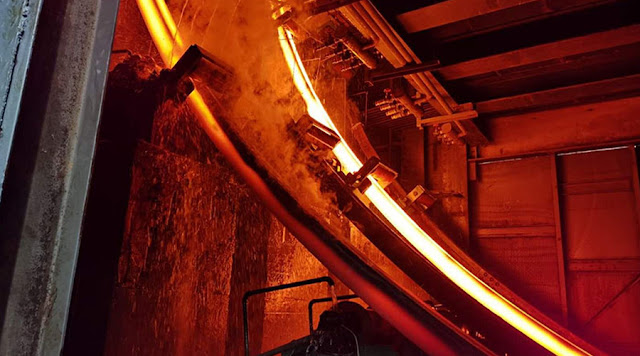What To Do About Continuous Casting Steel Leakage?
Continuous casting is a method widely used in the steel industry to produce high-quality steel. However, one of the problems faced by steel manufacturers is the problem of continuous casting steel leakage.
This problem can result in significant losses in materials and productivity. Therefore, steel manufacturers must take proactive steps to identify and address the causes of leaks to minimize their impact.
What Is Continuous Casting Steel Leakage?
Continuous casting leakage refers to the leakage of molten steel from the crystallizer during the casting process. This can happen for a variety of reasons, including mold wear, misalignment, improper assembly, or insufficient cooling. When leaks occur, not only does it result in wasted material, it also interrupts the casting process, causing production delays and increased costs.
To address continuous casting steel leakage, steelmakers should implement a comprehensive maintenance and inspection program. Regular mold inspections, including visual and dimensional inspections, can help identify any signs of wear or misalignment. If such problems are found, the mold should be repaired or replaced in time to prevent leakage.
Proper mold assembly is also critical to preventing leaks. Molds should be assembled accurately, ensuring joints are tight and properly aligned. The use of advanced technologies such as laser alignment systems can help achieve precise mold assembly, minimizing the chance of leakage.
Another important aspect to consider is the cooling system. Insufficient cooling can lead to excessive heat buildup, leading to mold deformation and subsequent leakage.
Steel manufacturers should ensure that cooling systems are operating optimally and have appropriate water flow and cooling configurations when continuous casting machine working. Regular monitoring of cooling parameters such as water temperature and pressure can help identify any abnormalities that could lead to leaks.
In addition to regular maintenance and inspections, steel manufacturers of continuous caster can also adopt advanced processes and technologies to solve the problem of steel breakouts in continuous casting.
For example, using mold powder can help improve mold surface quality and reduce friction between the mold and steel, thereby minimizing the risk of leaks. In addition, applying advanced coatings or surface treatments to molds can enhance their wear and corrosion resistance and reduce the chance of leaks.
Proactive steps should also be taken to resolve any issues related to the CCM casting process itself. For example, optimizing casting speed and adjusting mold taper can help reduce stress on the mold and minimize the potential for leaks. Additionally, maintaining proper steel chemistry, temperature and flow control during the casting process helps improve mold stability and reduce the risk of leaks.
Continuous casting steel leakage are a challenge that steelmakers must address to ensure efficient and economical production. By implementing comprehensive maintenance and inspection programs, employing advanced processes and technologies, and optimizing casting processes, steelmakers can significantly reduce the occurrence of leaks.
This not only helps minimize material waste but also increases productivity, ultimately making the steel industry more competitive and profitable.
E-mail: saleswn@hanrm.com / inquiry66@hanmetallurgy.com (Daisy Zhai)
Tel / Whatsapp / Wechat: 0086 17791213533
Xi'an Hani Tech Co., Ltd.



Comments
Post a Comment